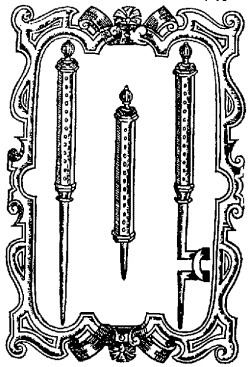 | ||
During the height of the witch trials of the 16th and 17th centuries, common belief held that a witch could be discovered through the process of pricking their skin with needles, pins and bodkins – daggerlike instruments for drawing ribbons through hems or punching holes in cloth.
This practice derived from the belief that all witches and sorcerers bore a witch's mark that would not feel pain or bleed when pricked. The mark alone was not enough to convict a person, but did add to the evidence. Pricking was common practice throughout Europe, but was most prevalent in England and Scotland. Professional witch finders earned a good living from unmasking witches, travelling from town to town to perform their services. Hollow wooden handles and retractable points have been saved from these finders, which would give the appearance of an accused witch's flesh being penetrated to the hilt without mark, blood, or pain. Other specially designed needles have been found with a sharp end and a blunt end. Through sleight of hand, the sharp end could be used on "normal" flesh, drawing blood and causing pain, while the unseen dull end would be used on a supposed witch's mark. The idea here being that the accused witch when pricked could not be injured due to their magical enchantments.
